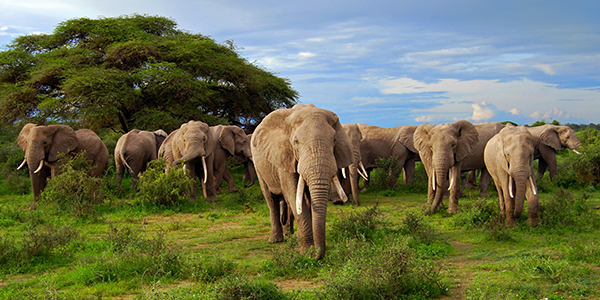20th September, 2017 16:12:40
There’s good news for elephants living in Kenya’s Masai Mara, as a recent census found the population has increased by 72%, rebounding after threats from poaching and conflict with humans.

Kenya Wildlife Service conducts an aerial census every three years to track wildlife numbers, and this year took stock of the animals living in the protected areas of Masai Mara National Reserve and Mara Triangle, Conservancies and nearby areas in the Mara ecosystem. This year’s survey was done between 15 and 28 May, covering an area of more than 11,600 square kilometres. The goal of the census is to look at the distribution of animals like elephants, buffaloes and giraffes, in relation to human activities and bodies of water. They look at the proximity to people, settlements and farming, and the location of livestock like cattle, sheep or goats. The information is then used to help guide management of the wildlife within the ecosystem.
The results mean that since 2014, there’s been a 72% increase in the number of elephants, as 2493 elephants were counted in 2017 compared to 1448 elephants back in 2014. This result has been celebrated by the wildlife service, as the Mara elephants had been under threat due to poaching and human-elephant conflicts. However, the wildlife service also notes that the high number of elephants when the survey was conducted could be due to migrating animals from the Serengeti. Other animals in the region saw increases, including a 26% increase in the number of buffalo, to 9466 from 7542. As animal numbers increase, the wildlife service also found that there’s been an increase in human activities in and around the protected areas, such as the addition of electric and wire fences and homes that could post a threat to the habitat of wildlife.
Credit: www.lonelyplanet.com
6 Days, 5 Nights Travel Trip
This festive offer for EA residents only features a 5-night/6-day premium s...
15 Days, 14 Nights Travel Trip
Great choice, travelers! For our next adventure, we will be visiting the be...
15 Days, 14 Nights Travel Trip
"Welcome to Palakkad, the land of mountains, forests and rivers. This pictu...
6 Days, 5 Nights Travel Trip
Welcome to the stunning destination cities of Arusha, Ngorongoro Conservati...
Stay updated with our latest news!